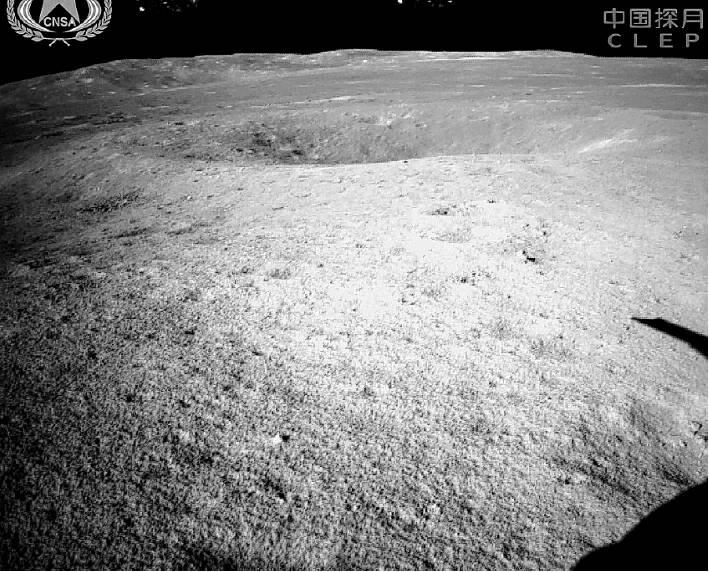China is first to land on far side of moon
Probe, rover mark Beijing’s biggest space achievement
By Sarah Kaplan and Gerry Shih WASHINGTON POST
In a first for the world, China has successfully landed a spacecraft on the far side of the moon, the China National Space Administration said Thursday as it announced its arrival as a bona fide space power.
The probe, named Chang’e 4, launched from southwest China in early December and landed at 10:26 a.m. Beijing time on Wednesday in Von Karman crater within the moon’s South Pole-Aitken basin, the largest known impact crater in the solar system. Shortly after landing, a rover on the landing craft dispatched the first photo of the moon’s surface from its far side back to Earth via a satellite communication relay.
Distinctive geology
The landing “marked a new chapter in the human race’s lunar and space exploration,” the CNSA said in a statement.
“The far side of the moon is a rare quiet place that is free from interference of radio signals from Earth,” mission spokesman Yu Guobin said. “This probe can fill the gap of low-frequency observation in radio astronomy and will provide important information for studying the origin of stars and nebula evolution.”
Although China, the United States and Russia have operated robotic spacecraft on the moon before, Chang’e 4 is the first to land softly on the side of the satellite that always faces away from the Earth. The geology on this side of the moon is distinctive, with more craters and less evidence of volcanic activity. But it’s difficult to explore, because scientists on Earth can’t communicate via direct radio signal with spacecraft in this remote region — a quandary China’s relay satellite has solved.
Producing an orange-tinted, high-definition photo of the moon’s lightly pockmarked surface Thursday, the landing demonstrated China’s ambitions to become a space power and scientific force in an era when NASA funding has generally been shrinking as a percentage of the U.S. federal budget. China spends more on scientific research than any nation but the United States, and it launched more rockets than any other country in 2018. In December, China announced it was starting global service for BeiDou — a homegrown satellite navigation system designed to compete with the U.S. Global Positioning System (GPS) — ahead of schedule.
“China is on the road to become a strong space nation. And this marks one of the milestone events of building a strong space nation,” Wu Weiren, chief designer for the lunar mission, told CCTV.
The Chang’e 4 mission was the latest in a series aimed at exploring the moon and paving the way for Chinese astronauts to eventually land on the lunar surface. The previous Chang’e 3 mission put a rover called Jade Rabbit on the moon, where it worked for nearly 1,000 days before breaking down in 2016. In Chinese mythology, Chang’e is the name of a goddess who lived on the moon.
The Chang’e 4 mission, which is mainly scientific, will use its cameras and ground-penetrating radar to understand the composition of Von Karman crater.
There, it’s thought that an ancient meteor impact during the early days of the solar system exposed material from the moon’s deep interior. Obtaining a precise date for the event, and probing the primitive rock it revealed, could help solve lingering mysteries about the formation of the moon and the history of the solar system.
Unrealized U.S. goal
Exploring the Aitkin basin has been a top priority for the U.S. National Academies of Science, Engineering and Medicine for the past two decades, noted Clive Neal, a Notre Dame geologist who is emeritus chair of the U.S. Lunar Exploration Analysis Group.
“Unfortunately,” he said, that goal “has yet to be realized by a U.S.-led mission.”
China revealed little about the Chang’e 4 mission in the run-up to the landing; it did not announce beforehand when it would attempt to land the spacecraft. The only information about the landing site and deployment of instruments has come from official Chinese sources.
NASA Administrator Jim Bridenstine congratulated China in a tweet Wednesday night, writing, “This is afirst for humanity and an impressive accomplishment.”
Although other countries, including Sweden, contributed instruments to the mission, the U.S. was not involved. A clause in the appropriations bills for NASA and the White House Office of Science and Technology Policy bars the agencies from collaborating with any Chinese entity.
